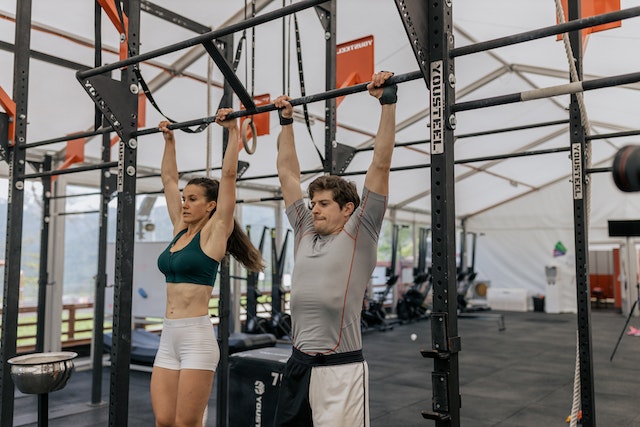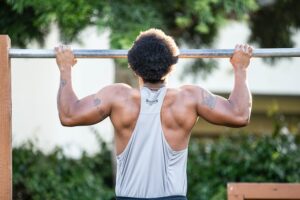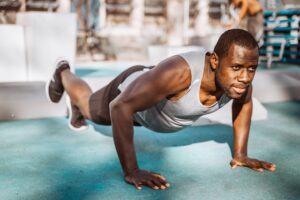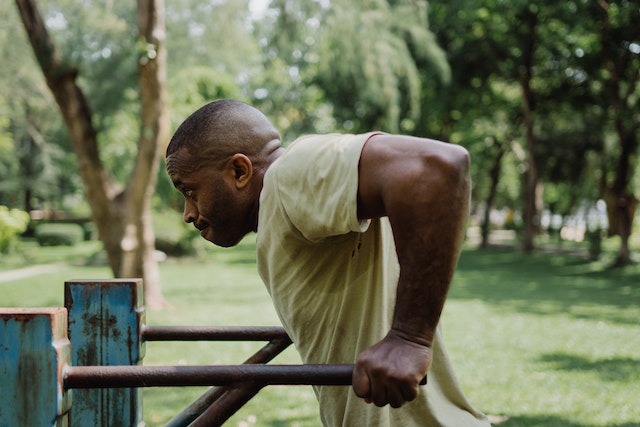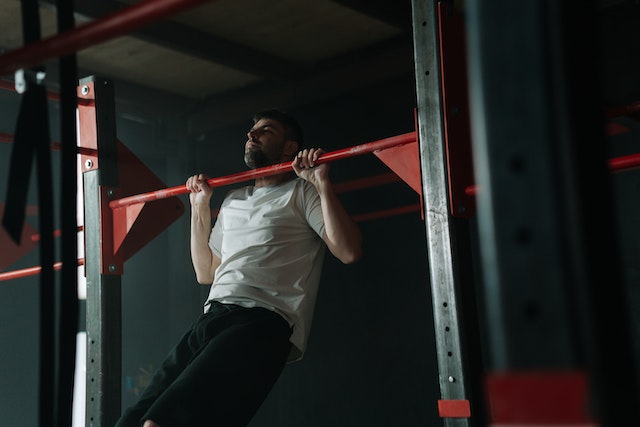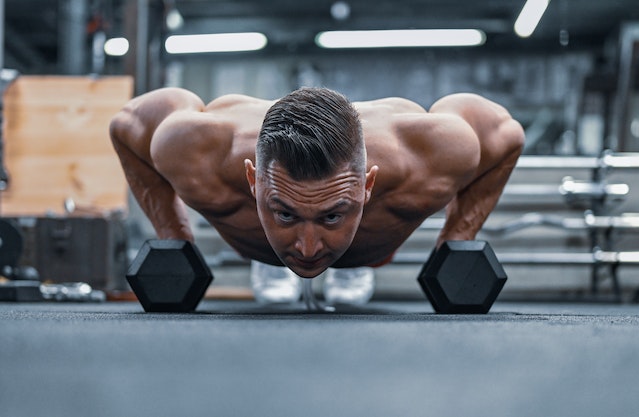Calisthenics is a form of exercise that uses only body weight and gravity to build strength, flexibility, and endurance. One popular calisthenics exercise is the pull-up, which involves hanging from a bar and pulling your body weight up to the bar. Pull-ups are known for building upper body strength, but can they also help improve posture, scoliosis, and rounded shoulders? Let’s take a closer look.
Do Pull-Ups Help Posture?
Good posture is essential for overall health and wellbeing. Poor posture can cause pain and discomfort in the neck, shoulders, and back, and can even affect breathing and digestion. Pull-ups are a compound exercise that works many of the muscles in the upper body, including the back, shoulders, and arms. By strengthening these muscles, pull-ups can help improve posture and reduce the risk of postural imbalances.
Incorporating pull-ups into your calisthenics routine can help you develop a stronger back and shoulders, which can help you maintain good posture throughout the day. Good posture involves keeping the spine in a neutral position, the shoulders down and back, and the chest lifted. By performing pull-ups with proper form, you can strengthen the muscles that support this position and improve your overall alignment.
Are Pull-Ups Better Than Chin-Ups For Posture?
Both pull-ups and chin-ups are excellent exercises for improving posture, as they target the muscles in the upper back and shoulders. However, pull-ups tend to be more effective for this purpose, as they require a wider grip and engage the lats more intensely. This can help pull the shoulders back and down, reducing the forward hunch associated with poor posture. Nevertheless, chin-ups can still be a beneficial exercise for overall upper body strength and development. It’s ultimately a matter of personal preference and what works best for your body.
Tips for Improving Posture with Pull-Ups:
- Focus on keeping your shoulders down and back throughout the movement
- Engage your core to help maintain a neutral spine
- Avoid swinging or using momentum to complete the exercise
- Start with a low number of reps and sets, gradually increasing as you become stronger
- Incorporate other exercises that target the core and lower body to support the spine and reduce stress on the back muscles
Do Pull-Ups Help Scoliosis?
Scoliosis is a condition characterized by an abnormal curvature of the spine. While there is no cure for scoliosis, exercise can be an effective way to manage symptoms and improve quality of life. Pull-ups are one exercise that can potentially help alleviate some of the effects of scoliosis.
By strengthening the muscles in the upper back and shoulders, pull-ups can help improve posture and alignment, which can help reduce the curvature of the spine in individuals with scoliosis. Additionally, the exercise can help increase mobility and flexibility in the spine, reducing stiffness and discomfort.
It’s important to note that while pull-ups can be beneficial for individuals with scoliosis, it’s essential to approach the exercise with caution and seek guidance from a medical professional or experienced trainer. Depending on the severity of the condition, some modifications or variations of the exercise may be necessary to avoid exacerbating symptoms.
Tips for Incorporating Pull-Ups into Your Scoliosis Routine:
- Seek guidance from a medical professional or experienced trainer before starting an exercise program
- Start with a low number of reps and sets, gradually increasing as you become stronger
- Focus on maintaining proper form and engaging the muscles in the upper back and shoulders
- Incorporate other exercises that target the core and lower body to support the spine and reduce stress on the back muscles
Do Pull-Ups Help Rounded Shoulders?
Rounded shoulders are a common postural issue, often resulting from poor sitting or standing habits and muscle imbalances in the upper back and shoulders. This condition can lead to pain and discomfort in the neck, shoulders, and upper back. Fortunately, exercises like pull-ups can help correct this postural imbalance and alleviate some of the symptoms associated with rounded shoulders.
Pull-ups work many of the muscles in the upper back and shoulders, including the rhomboids, traps, and rear deltoids, which are important for maintaining good posture and shoulder alignment. By strengthening these muscles, pull-ups can help pull the shoulders back and down, reducing the forward hunch associated with rounded shoulders. Additionally, the exercise can help improve scapular stability, which is essential for proper shoulder mechanics and preventing injury.
Tips for Improving Rounded Shoulders with Pull-Ups:
- Focus on keeping the shoulders down and back throughout the movement
- Engage the muscles in the upper back and shoulders, specifically the rhomboids, traps, and rear deltoids
- Avoid swinging or using momentum to complete the exercise
- Start with a low number of reps and sets, gradually increasing as you become stronger
- Incorporate other exercises that target the muscles in the upper back and shoulders, such as rows and shoulder retractions
Final Thoughts
Pull-ups are a versatile exercise that can help improve posture, scoliosis, and rounded shoulders. By incorporating pull-ups into your calisthenics routine, you can strengthen the muscles in the upper body and improve overall alignment, reducing the risk of postural imbalances and associated pain and discomfort.
However, it’s important to approach the exercise with caution, particularly if you have scoliosis or other medical conditions. Seek guidance from a medical professional or experienced trainer to ensure that you are performing the exercise safely and effectively.
Remember, consistency is key when it comes to seeing results from any exercise program. Start with a low number of reps and sets, gradually increasing as you become stronger. Don’t forget to incorporate other exercises that target the core and lower body to support the spine and reduce stress on the back muscles.
Incorporating pull-ups into your calisthenics routine can be a fun and effective way to improve your overall health and wellbeing. So go ahead, grab a bar and start pulling your way to better posture, scoliosis management, and less rounded shoulders!
